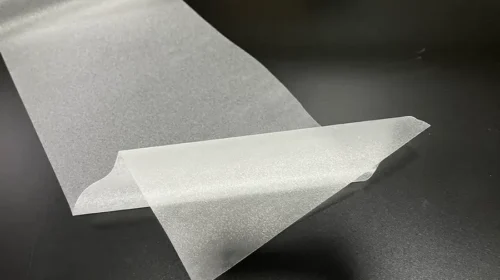Leapmotor Steps on Cash-Burn Accelerator as Sales Flag

The new energy vehicle (NEV) maker burned through 2.6 billion yuan in cash in the first quarter, leaving it with 8.9 billion yuan in its coffers at the end of March
Key Takeaways:
- Leapmotor delivered 10,509 vehicles in the first quarter, down 51.3% year-on-year, as growth in China’s NEV market slowed sharply
- The company’s gross margin improved notably during the quarter on rising prices for its vehicles
By Doug Young
The latest quarterly results from Zhejiang Leapmotor Technology Co. Ltd. (9863.HK) show how this kind of second-tier brand is rapidly losing the race for a place in China’s fast-growing but highly competitive new energy vehicle (NEV) market.
Perhaps most worrisome, the company’s sputtering sales – which included a halving of its vehicle deliveries in the first quarter – are putting a major crimp on its finances. As its sales plunge, the company is turning to its rapidly dwindling cash pile to fund its operations. That could become problematic if Leapmotor’s sales don’t pick up soon, since its current cash is only enough to last through the end of the year if it keeps burning money at the current rate.
We’ll begin our review of Leapmotor’s latest results with some background at the most macro level. That includes China’s rise to become the world’s largest NEV market over the last two years, as Beijing aggressively promoted the industry through a wide range of policy measures. But much of that support has now ended, forcing the bumper crop of manufacturers that feasted off government largess to sink or swim now using their own resources.
Notably, most government subsidies for NEV buyers ended at the end of last year. As that happened, NEV sales dropped from near-triple-digit growth in 2022 to just 22% in this year’s first quarter. As the numbers dropped, a widening divide has emerged between top-tier NEV makers and smaller niche-players like Leapmotor.
Two of the biggest NEV names, homegrown giant BYD (1211.HK; 002594.SZ) and Tesla (TSLA.US), were able to keep growing in the first quarter from year-ago levels, with the former’s sales nearly doubling and the latter’s up 27%. But Leapmotor moved in the opposite direction, reporting its deliveries tumbled 51.3% year-on-year to 10,509 electric vehicles in the first three months of 2023.
It blamed the drop on a number of factors, including the end of government subsidies.
The company’s stock fell 3.6% on Tuesday, the first trading day after the results were announced. But after initially losing more than half its value in the first two weeks after its trading debut last September, the stock has actually rallied and at its Wednesday close of HK$33.80 now trades about 30% below its IPO price of HK$48.
Interestingly, the company actually trades at a price-to-sales (P/S) ratio of 3.0, which is higher than many of its peers. BYD trades at a much lower P/S ratio of 1.3, while domestic rival Nio (NIO.US; 9866.HK), whose deliveries rose 21% year-on-year in the first quarter, trades at 2.1. Tesla trades higher at 6.2. And XPeng (XPEV.US; 9868.HK), which is in a similar boat to Leapmotor after posting a 47% decline in first-quarter vehicle shipments, also trades at a higher P/S ratio of 4.6.
Such wide variation, with struggling players often valued more highly than better performers, seems to indicate investors remain hopeful that the struggling group will find a way to pull through their current slump. Leapmotor is trying to make investors believe that by pointing out that it launched its new 2023 models in March, which should help to jumpstart its sales.
Accelerating cash burn
The launch of new models is almost certain to help Leapmotor’s shipments improve in the second quarter compared with the first. But the more urgent question is how much sales will improve, since the company is quickly using up its cash.
Leapmotor said it burned 2.6 billion yuan ($376 million) in cash for its operating activities in the first quarter, up from 1.6 billion yuan in last year’s fourth quarter and a relatively modest 385 million yuan a year earlier in the first quarter of 2022.
At the same time, the company said it had 8.88 billion yuan in cash in its coffers at the end of March, which includes the HK$6.3 billion it raised in its IPO. Thus, if the company continues to burn cash at the same rate it did in the first quarter, its current cash would be sufficient to fund its operations for just the next three quarters.
While it seems likely the cash burn rate might ease with the launch of its new models, it also seems likely that Leapmotor will need to raise some more money later this year. That could put pressure on its stock in the months ahead, since such fundraising is quite likely to come through the sale of new shares at a discount.
Established by defense technology company Zhejiang Dahua Technology (002236.SZ) and its leading founders in 2015, Leapmotor had launched four models at the time of its IPO last fall and planned to launch seven new models by the end of 2025 covering all sizes of sedans, SUVs and MPVs. Its Founder and Chairman Zhu Jiangming didn’t sound extremely optimistic about the year ahead.
“Based on our understanding of the new energy vehicle industry, we believe that the market will continue to develop rapidly and be full of challenges in 2023,” he said in comments accompanying the latest results.
Despite the gloomy picture, Leapmotor’s latest results did contain a few encouraging signs. The company’s revenue fell 28% year-on-year to 1.44 billion yuan, which was far milder than the 51.3% drop in its number of vehicles sold. That seems to imply its average selling price was quite a bit higher this year, indicating it is gaining traction in higher-priced models.
As that happened, the company’s gross margin improved notably to negative 7.8% in the latest quarter from negative 26.6% in the first quarter of 2022. Leapmotor’s bottom line also looked relatively stable. Its first-quarter net loss came in at 1.13 billion yuan, which was just slightly wider than the 1.04 billion yuan loss it posted a year earlier.
At the end of the day, we wouldn’t put major bets on this increasingly struggling group of second-tier NEV makers like Leapmotor, as they appear to be shaping up as classic potential victims of an upcoming consolidation for the sector. But if the company can post some new momentum in the second quarter after the launch of its 2023 lineup, its stock could still be worth a look for some investors with a high appetite for risk.
To subscribe to Bamboo Works free weekly newsletter, click here






